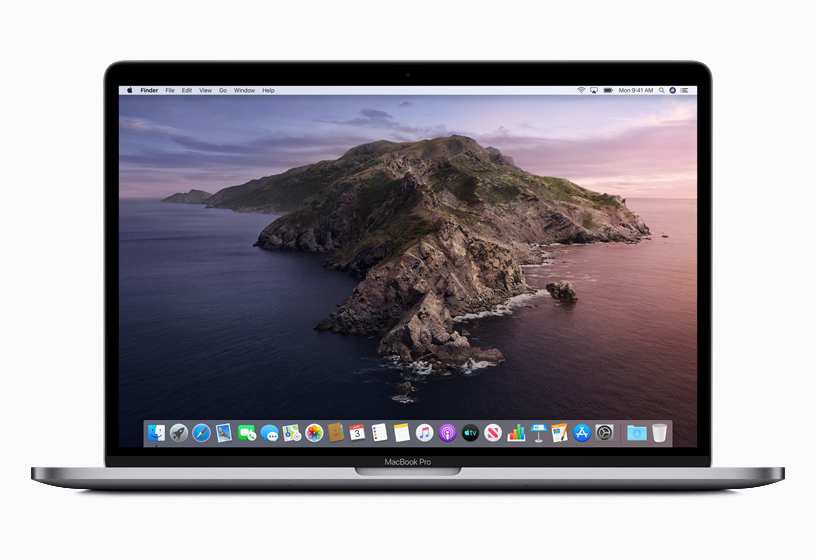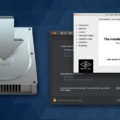Are you lookig to update your Mac to the newest operating system, macOS Catalina? Updating your Mac to the latest version of macOS is a great way to keep your computer running smoothly and securely.
First, you will need to check that your Mac is compatible with Catalina. To do this, click on the Apple menu in the top left corner of your screen then select About This Mac. You shoud see a window that lists your Mac model and year. Check the Apple website to make sure that your model is supported by macOS Catalina.
Once you have established that you can upgrade to Catalina, open the App Store app on your Mac. It can be found in Applications or using Spotlight Search. Once you open it, click Updates at the top of the App Store window and look for an entry for “macOS High Sierra 10.13” or later if available. Click Update next to this entry and follow the instructions provied by Apple to complete the installation process of macOS Catalina onto your Mac.
If you are unable to find an update through the App Store, there is another option available: downloading it directly from Apple’s website. Go to teir website and search for “macOS Catalina” then follow the instructions provided on how to download and install it onto your machine. Be sure you have enough free space on your hard drive before attempting this option as well as a reliable internet connection since it may take some time depending on how fast yours is!
Updating your Mac can be an intimidating task but with these easy steps, you can be running macOS Catalina in no time! Keep in mind that it may take some time for downloading and installing so make sure you give yourself enough time before starting this process so that it does not interfere with any other tasks or deadlines that you may have.
Troubleshooting Mac Not Updating to Catalina
There are a few potential reasons why your Mac might not be updating to Catalina. One potential issue is that there may not be enough free storage space on your Mac to accommodate the macOS update. Check your available storage space by going to the Apple menu > About This Mac > Storage, and make sure you have at least 12.5GB of free storage space for the update to install.
Another possible reason is due to network connectivity issues. Make sure your Mac is connected to a reliable internet connection and try downloading the update again.
You may also want to check if any third-party security software installed on your Mac is preventing macOS from updating. Temporarily disable any active security software, then try downloading and installing macOS Catalina again.
Finally, if you’ve already attempted to download macOS Catalina and it didn’t complete, you can try deleting any partially-downloaded files (such as ‘Install macOS 10.15’) from your hard drive and rebooting your Mac before attempting the download again.
Updating a Mac When No Updates Are Available
If you’re seeng the message “No updates available” when you check for software updates, it means that none of the apps on your Mac are currently out of date. This doesn’t necessarily mean that your Mac is completely up-to-date; it just means that all of the installed software is at its most recent version.
If you want to make sure your Mac is running the latest version of macOS, open the App Store app, whch is in your Applications folder. Then click the Updates tab in the App Store to check for updates. If a new version of macOS is available, you can install it from there.
You should also check for updates for any third-party apps you have installed. To do this, open System Preferences and click on Software Update. Here you can choose to manually check for new versions of any installed software, or even have Software Update automatically download and install new versions as they become available.
Finally, if you don’t see Software Update in System Preferences, use Search in the corner of the window to search for it. If your older Mac doesn’t include Software Update, open the App Store app and click the Updates tab to check for updates manually. You can also search for software by name if you know wich programs need updating.
Downloading macOS Catalina for Mac
Yes, you can still download Catalina for Mac. To do so, you can open the Mac App Store and search for “Catalina” or you can use this direct link to the Catalina page in the Mac App Store. Once there, you will be able to download the installer for Catalina. After downloading, simply follow the on-screen instructions to complete the installation process on your Mac.

Updating MacOS Sierra to MacOS Catalina
Yes, you can update macOS Sierra to Catalina. Before updating, you should make sure that your Mac meets the system requirements for macOS Catalina. To update your Mac, first open the App Store app and click on the Updates tab at the top of the app window. Then look for an entry labeled “macOS Catalina 10.15” and click the Update button to its right. The download may take some time depending on your internet connection speed, so be patient and wait for it to finish. Once it has downloaded, follow the on-screen instructions to complete the installation process.
Is Upgrading to macOS Catalina Compatible with My Mac?
It depends on the exact model of your Mac. To update to macOS Catalina, you need a MacBook from Early 2015 or later, a MacBook Air from Mid 2012 or later, or a MacBook Pro from Mid 2012 or later. If your Mac is older than thse models, you won’t be able to update to Catalina. You can check the exact model and year of your Mac by clicking the Apple logo in the top left corner of your screen and selecting “About This Mac”.
Forcing a Mac to Update
To force your Mac to update, open System Preferences and select Software Update. You can also click the Apple menu and check for updates manually. If there are any availble updates, they will be listed next to App Store. Choose App Store to continue in the App Store app and download the latest updates. Additionally, you can open the App Store and click Updates in the sidebar to view available updates. Once you’ve found an update you’d like to install, click Update or Install next to it.
Macs Compatible with macOS Catalina
Any Mac model released in 2012 or later can run macOS Catalina. This includes MacBook, MacBook Air, and MacBook Pro models released in Mid 2012 or later. Additionally, any Early 2015 or newer MacBook models are also compatible with Catalina.
Installing macOS Catalina on an Older Mac
Installing Catalina on an older Mac is relatively straightforward, but there are a few steps you need to take to ensure the process goes smoothly. First, you’ll need to download the latest version of the Catalina patch. You can do this by visiting the official Apple website and navigating to the downloads page for macOS. Once you’ve downloaded the patch, open it with the Catalina Patcher app and click ‘Continue’. You’ll then be prompted to choose either ‘Download a Copy’ or ‘Create a Bootable Installer’. If your Mac has limited storage space, it may be better to select ‘Create a Bootable Installer’ and plug in a flash drive. The download will then start – snce it’s almost 8GB, it is likely to take a while.
Once the download is complete, you can begin installation by opening Finder and navigating to Applications > Utilities > Boot Camp Assistant in order to partition your drive for dual-booting. Then, open Terminal and type in ‘sudo /Applications/Install\ macOS\ Catalina.app/Contents/Resources/createinstallmedia –volume /Volumes/MyVolume’ (replacing MyVolume with your drive name). Next, open Disk Utility and select your bootable USB drive from the left-hand side menu before clicking ‘Erase’. Finally, restart your Mac and press and hold ‘option’ durig startup in order for your computer to recognize the USB drive as a bootable device. You should then see your Mac boot into macOS Catalina setup mode and you can follow the onscreen instructions in order to complete installation.
Installing Apple Catalina
To install Apple Catalina, begin by opening the App Store on your Mac and searching for “macOS Catalina.” Click the “Get” button to begin downloading the macOS installer. Once it is finished downloading, the installer will automatically open in your Applications folder. Follow the onscreen instructions to complete the installation process. You may be asked to enter your Apple ID and password duing installation. Once you have completed the installation, you will be able to use all of the new features of macOS Catalina on your Mac.
Should I Upgrade My Mac to macOS Catalina?
Updating your Mac from Sierra to Catalina is a good decision if you’re looking for stability and improved security. Catalina is the latest version of macOS, and it provides a number of new features and improvements. It has better support for Apple’s mobile devices, an improved Finder with tabs, improved application sandboxing for enhanced security, and a new systemwide Dark Mode. Additionally, it supports 64-bit applications only, so if you’re running 32-bit applications, you’ll need to update them or keep running High Sierra. Ultimately, the decision is yours to make based on your own needs and preferences.
Updating Mac to 10.15 Catalina
Updating your Mac to macOS 10.15 Catalina is easy! First, open the System Preferences menu and select Software Update. You will see if thee are any updates available, such as macOS Catalina. If macOS Catalina is available, click the Upgrade Now or Download button to begin downloading the installer package. Once it has downloaded, you will be able to follow the on-screen instructions to install it on your Mac. Make sure to back up your files before updating, as there may be some compatibility issues with older software versions. Also, keep in mind that some applications may no longer be compatible with Catalina. After completing the update process, you should be all set and ready to go!
Troubleshooting Mac Update Issues
Updating your Mac is an important part of keeping your system secure and running smoothly. Unfortunately, there are a few potential issues that can prevent you from updating. First, you may not have enough RAM or storage space on your device to download the update. Secondly, your computer may be having difficulty connecting to the internet or downloading the update. Finally, there may be a problem with your hard drive or other system files that needs to be repaired bfore you can update. If none of these are the issue, try restarting your computer and downloading the update manually. If this still doesn’t work, try booting in safe mode or repairing your hard drive in Disk Utility.







